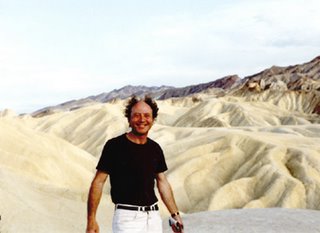
New Pleasure Principle and the Value of Serious Fun?
Highlights from dinner conversation last night:
Manet was having a good time. That's part of what makes his painting so freaking fun to look at--there is this infectious quality to it. Duchamp was having a good time fucking with the viewer. This quality of mischef is exactly what makes his work so engaging. It's more than smart--it's also impish and serious about manipulation.
Contemporary art does often lack these pleasurable extra qualities like infectiousness or impishness or absurdity, and it seems to lack these lingering notes by design. The point seems to be mental, but also seems to be extremely direct. The point seems to be to make sense. The results are easily explained and tailor-made for grants and the rest of the meta-money machine that supports artists. The Chelsea walk becomes ever more excruciating.
What happened to having a good time?
At the same time, nothing is being taken seriously. Compromise with the state of things and all that. On one hand, as Kat has pointed out to me with devastating effect, this makes sense because everything is fundamentally a bullshit illusion that separates us from the interconnected nature of everything and is therefore the root cause of all suffering. Good buddhist. Why take anything seriously when everything, even June Carter, is bullshit?
Why not just wallow in the mudpit of mediocrity if nothing matters? It's certainly easier to take the most direct and flattening route to utter disrespect of self (evident everywhere, not just in art: corn syrup, the exurban sitting-down lifestyle, global warming, reality TV...)
Artists are mirroring the culture they live in, and that culture is increasingly brittle, increasingly unpleasant and unpleasurable. Fear Factor, Survivor, processed food, driving long distances alone, following every move of Jennifer, Brad and Angelina...these are consumer choices based on a denial of pleasure and substituting something else, something that stands in for pleasure.
And Baudrillard has already written about how this creates an echo chamber of banality.
Back to dinner conversation. Yes, the good buddhist asserts with all her might that this echo chamber of banality and everything else around it is an illusion that only creates suffering. But the good buddhist cares mightily about that suffering. And also has an ego huge enough to assert itself and ask (well, beg really) to be released. Enlightenment may be characterized as a deep, bodily understanding that this is all bullshit, but actually acting like it's truly bullshit and mucking around in it without any respect for the fact that we are all still here is ugly, disrespectful.
There is no fun in it.
So fuck it, I am going to have a good time. Not in spite of the fact that art sucks, the polar ice cap is melting, the US is really fucking up the middle east, etc. But because I am alive in all of this madness. If all the enlightened people are telling us the truth, none of this evil can really hurt me, because it doesn't exactly exist (although the suffering it produces does). So it doesn't make any sense to collapse into any of it. The only way I can think of not to collapse is to remain joyous.
More dinners!
(thanks Kat for a great dinner conversation)


